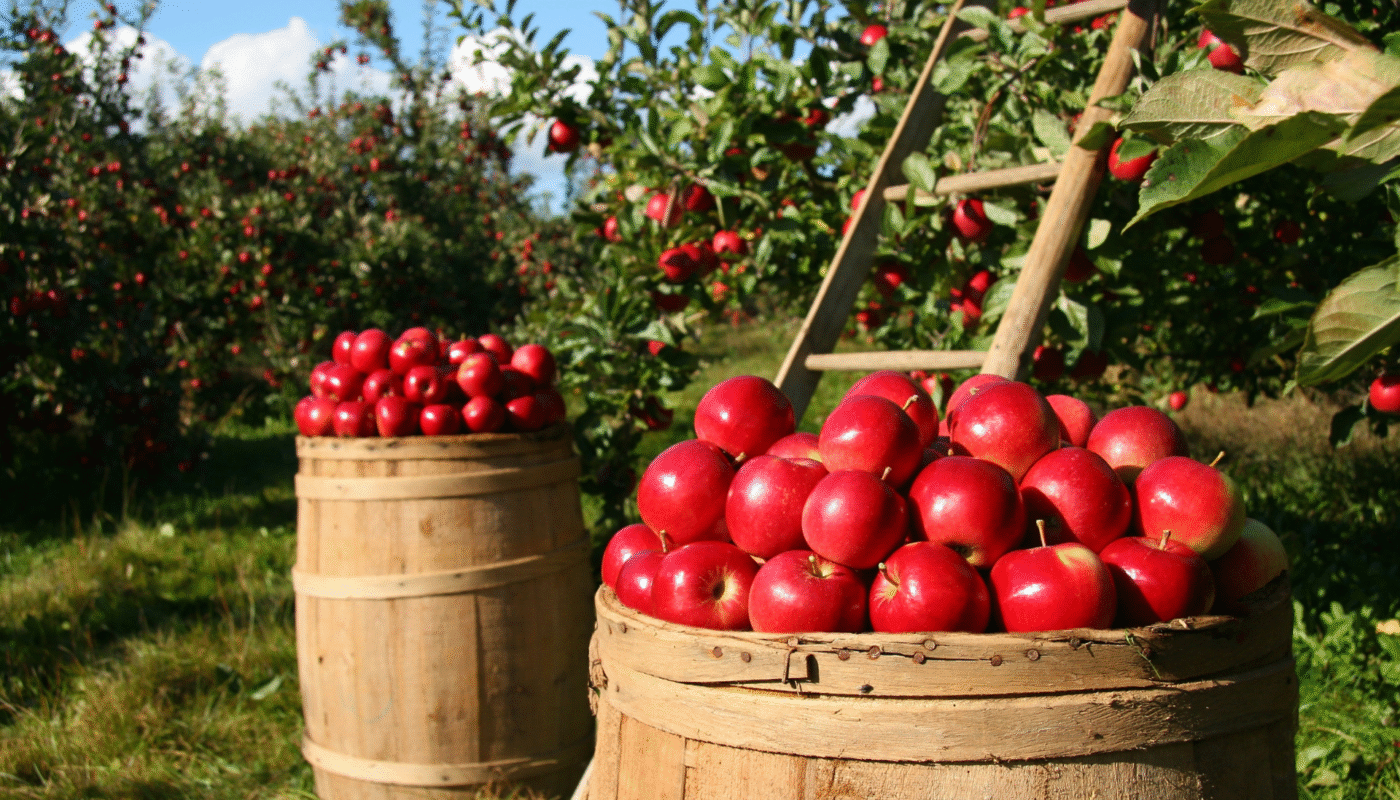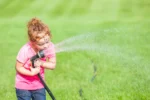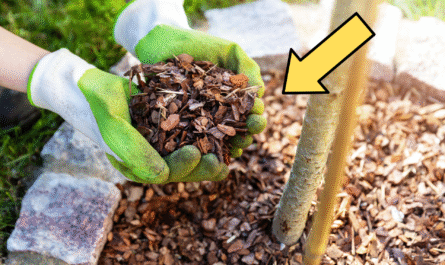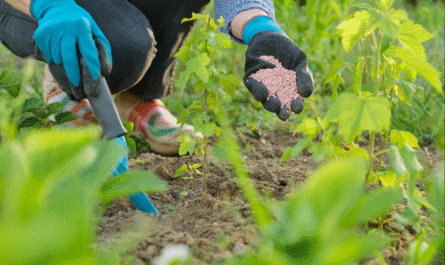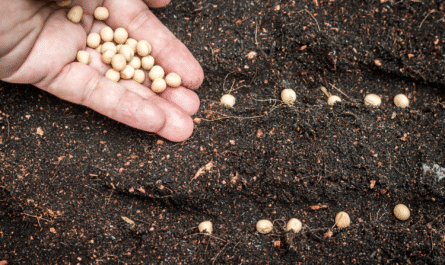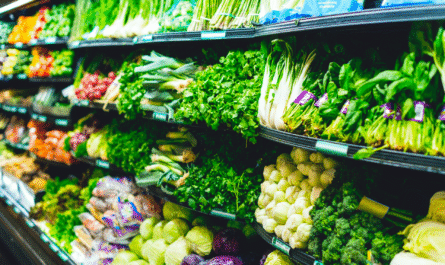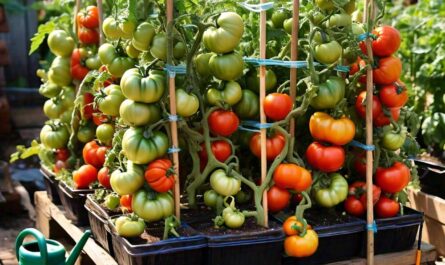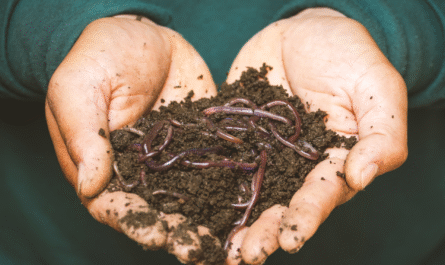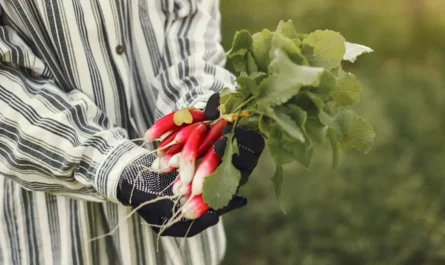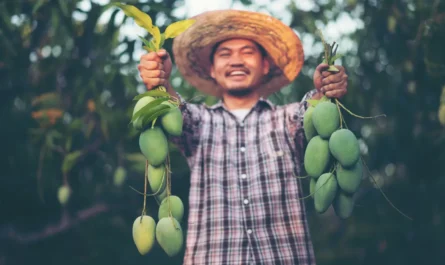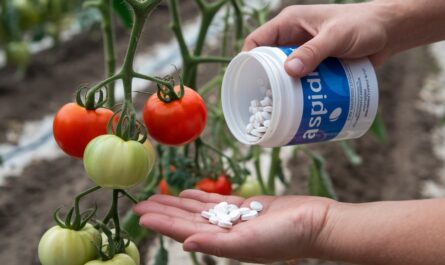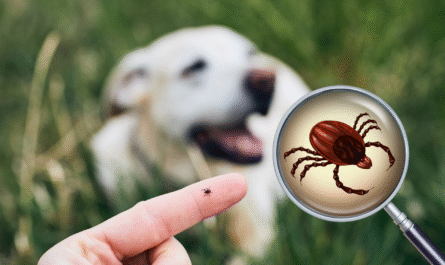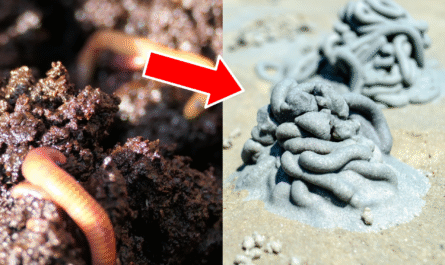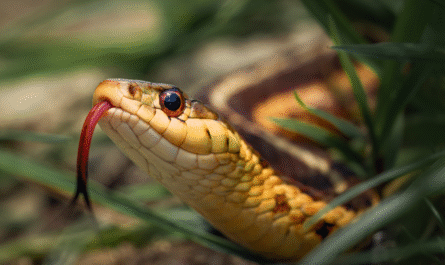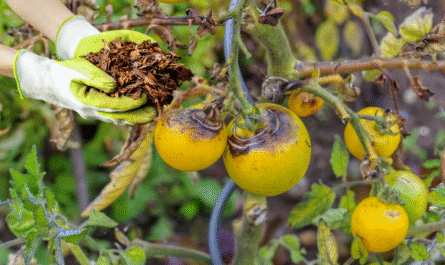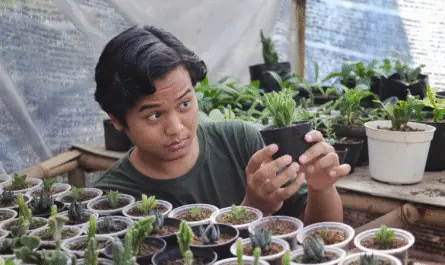Growing apple trees in your backyard or orchard can be one of the most rewarding gardening endeavors. However, maintaining a healthy apple crop year after year can be challenging. Apple trees are vulnerable to a wide range of pests, diseases, and even nutrient competition from weeds.
Fortunately, there’s a natural, chemical-free strategy that not only protects your apple trees but also improves soil quality and boosts pollination: companion planting.
Companion planting is the strategic placement of specific plants near each other to create a beneficial relationship. In the case of apple trees, certain herbs, flowers, and vegetables can deter pests, attract beneficial insects, suppress weeds, and improve overall tree health.
Here are eight of the best companion plants to grow near your apple trees if you’re aiming for a bountiful, pest-resistant harvest.
1. Chives

Benefits:
- Repels apple scab and aphids
- Attracts pollinators with its flowers
- Enhances the flavor of apples over time
Chives are a powerhouse in any garden and a top-tier companion for apple trees. Their strong scent is particularly effective in deterring pests like aphids and Japanese beetles. Even better, chives are believed to help prevent apple scab, a common fungal disease that affects apple trees.
To get the most benefit, plant chives in a ring or clumps around the drip line of the tree. Their pretty purple flowers also attract bees, enhancing pollination and fruit production.
2. Garlic
Benefits:
- Natural antifungal and antibacterial properties
- Repels aphids, borers, and spider mites
- Enhances soil health
Garlic is more than a kitchen staple; it’s also a formidable companion plant for apple trees. The sulfur compounds in garlic act as a natural fungicide and pest deterrent. When planted near apple trees, garlic helps keep away harmful insects like aphids and borers while simultaneously improving soil microbial activity.
You can’t tuck garlic bulbs around the base of your apple trees in early fall or spring. Not only will it grow quietly beneath the tree canopy, but it also requires minimal maintenance.
3. Comfrey
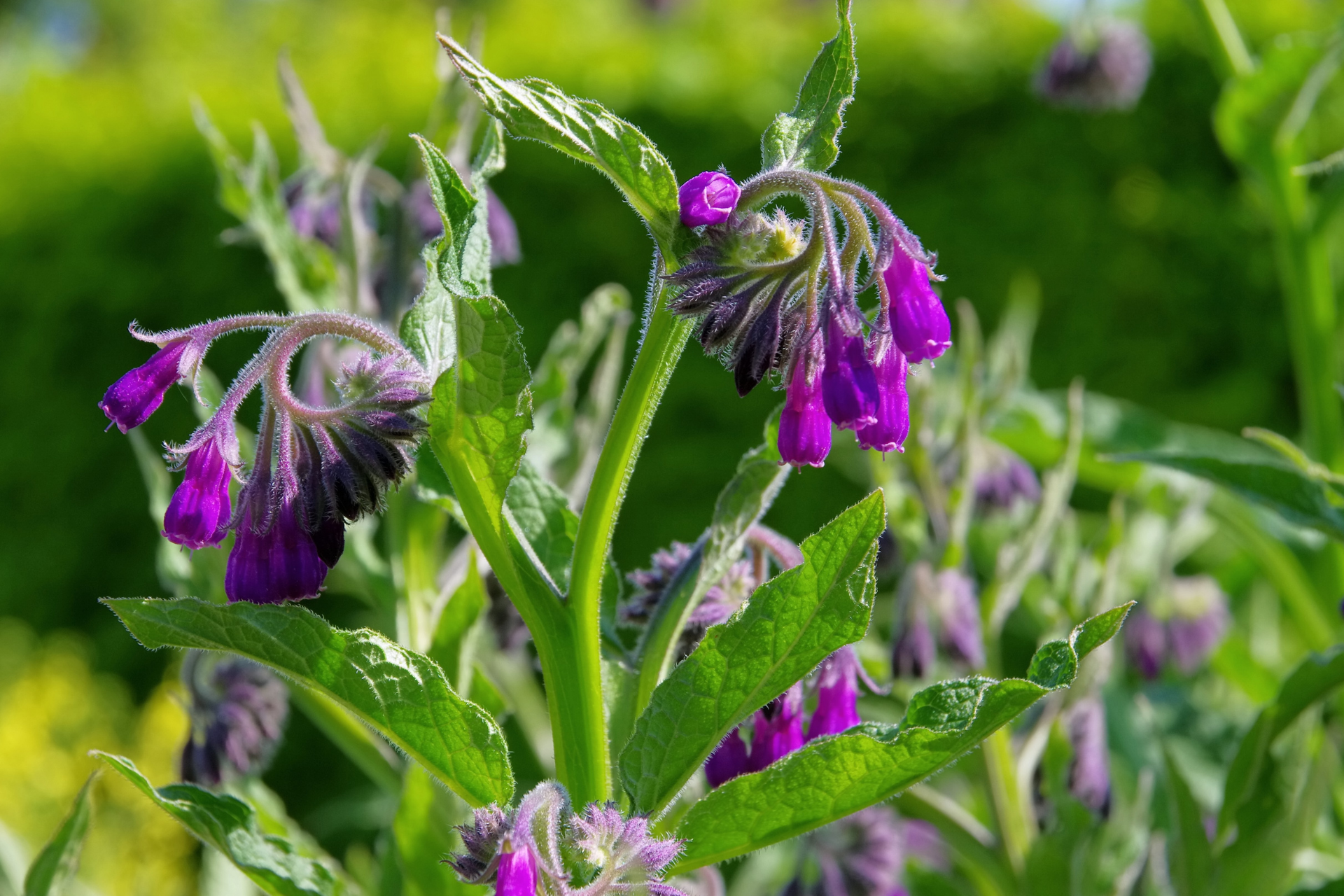
Benefits:
- Dynamic nutrient accumulator
- Attracts pollinators
- Excellent mulch source when chopped
Comfrey is one of the most underappreciated plants in the companion planting world. Its deep taproots pull up nutrients like potassium, calcium, and magnesium from the subsoil, making them available to shallow-rooted plants like apple trees.
In addition to improving soil health, comfrey leaves can be chopped and dropped around the base of your apple tree to act as a natural mulch. Its purple flowers attract bees and other pollinators, which is essential for fruit production.
Be mindful: Comfrey can spread quickly, so choose non-invasive varieties like Russian comfrey (Bocking 14).
4. Calendula (Pot Marigold)
Benefits:
- Repels a wide range of pests (aphids, beetles, nematodes)
- Attracts beneficial predatory insects
- Enhances biodiversity
Calendula is not just beautiful—it’s a natural insect repellent and one of the best pest deterrents you can plant. Its sticky, resinous stems and leaves trap aphids, whiteflies, and other small insects, keeping them off your apple tree.
Calendula also invites beneficial insects like ladybugs, hoverflies, and lacewings, which prey on harmful bugs. Scatter calendula throughout your orchard or around individual trees for a splash of color and a burst of protection.
5. Nasturtiums
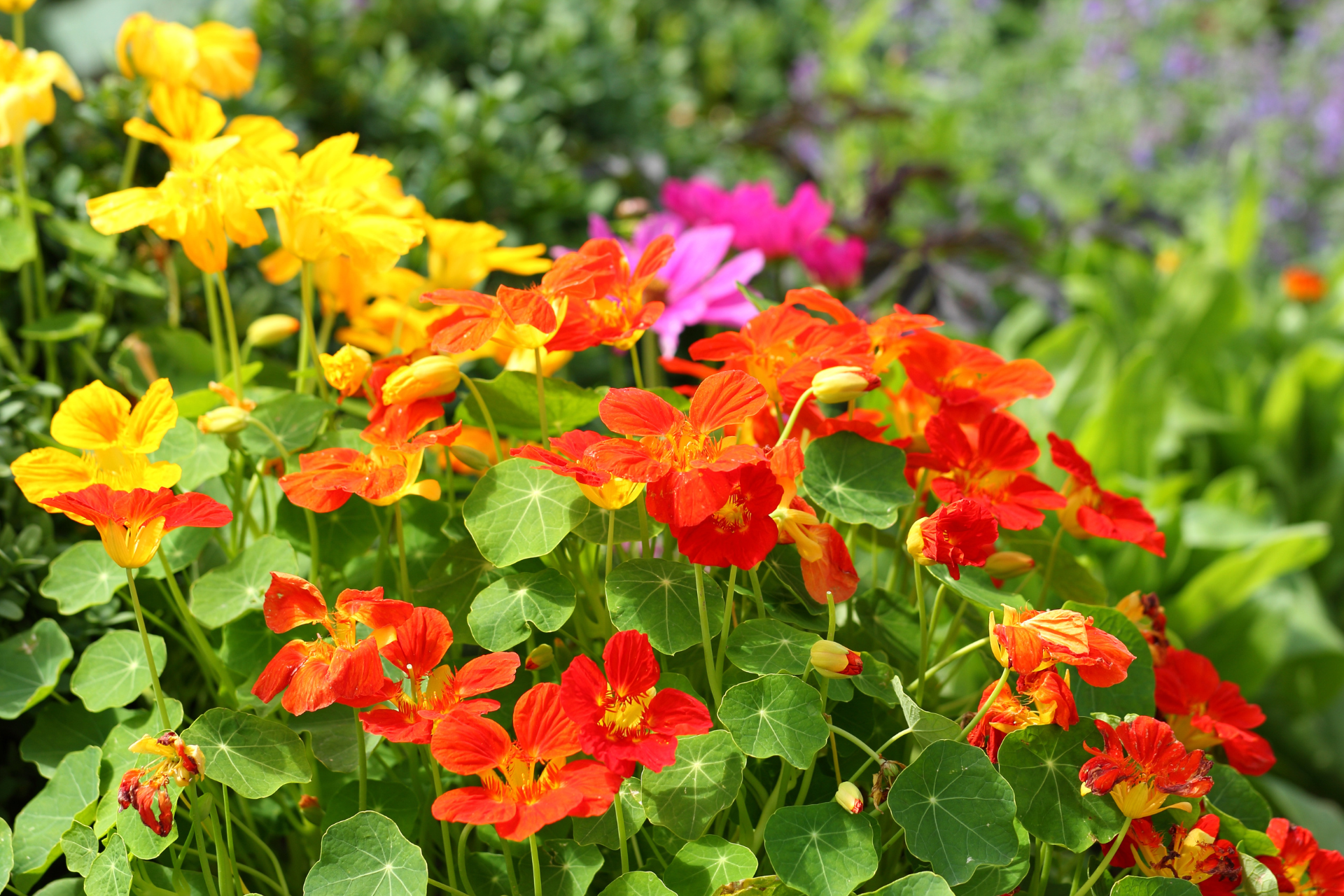
Benefits:
- Acts as a trap crop for aphids and whiteflies
- Attracts pollinators and beneficial insects
- Adds aesthetic appeal
Nasturtiums serve as an effective “trap crop”, drawing pests like aphids and whiteflies away from your apple trees. Their sprawling vines and colorful flowers lure these insects away from your precious apple blossoms.
In addition, nasturtiums attract pollinators like bees and butterflies, which can boost apple yields. Since they grow quickly and thrive in partial shade, they make excellent ground cover around the base of apple trees.
Just remember to remove heavily infested nasturtium leaves to prevent pests from multiplying.
6. Dill
Benefits:
- Attracts ladybugs, parasitic wasps, and hoverflies
- Repels spider mites and aphids
- Adds kitchen and medicinal value
Dill is another versatile herb that works wonders in the orchard. When planted near apple trees, dill attracts a variety of beneficial insects—most notably parasitic wasps and ladybugs—that help control pest populations naturally.
This annual herb also produces umbrella-shaped flowers that enhance your garden’s biodiversity and visual appeal. Allow some dill to flower and go to seed each season to keep a consistent population of pest predators nearby.
7. Yarrow

Benefits:
- Enhances soil nutrient content
- Attracts pollinators and beneficial insects
- Increases drought resistance
Yarrow is a hardy perennial known for its drought tolerance and beautiful, feathery leaves. It’s a favorite among pollinators and beneficial insects, making it ideal for growing near apple trees. Its roots also improve soil structure and help retain moisture.
Yarrow can be grown at the borders of your orchard or even scattered between trees to create a biodiverse buffer zone. Its flowers come in white, yellow, pink, and red, adding ornamental charm to its many functional benefits.
8. Chamomile
Benefits:
- Fights fungal infections in soil and plants
- Attracts hoverflies and parasitic wasps
- Improves the flavor and growth of nearby fruit
Chamomile, often called the “plant doctor,” has natural antibacterial and antifungal properties that benefit surrounding plants. Growing chamomile near apple trees can help reduce the risk of fungal infections like powdery mildew and apple scab.
Its delicate daisy-like flowers also attract hoverflies and parasitic wasps, which target and kill garden pests. Chamomile has the added benefit of subtly enhancing the flavor of apples, especially when used as part of a long-term companion planting strategy.
Bonus Tips for Companion Planting Around Apple Trees
Companion planting isn’t just about putting plants together and hoping for the best—it requires careful planning and balance. Here are a few extra tips to ensure success:
1. Don’t Overcrowd
Apple trees need good air circulation to avoid fungal diseases. Make sure companion plants don’t overcrowd the base or create dense shade.
2. Rotate and Mix
Try mixing annual and perennial companions so you maintain a balance between soil builders, pest deterrents, and pollinator attractors.
3. Mulch Wisely
Use chop-and-drop mulch from comfrey or dead calendula flowers to boost soil nutrients naturally.
4. Avoid Incompatible Plants
Steer clear of planting brassicas (like cabbage or broccoli) and potatoes near apple trees. These plants either attract pests or compete for similar nutrients.
Final Thoughts
Planting the right companions near your apple trees can drastically reduce pest infestations, improve tree health, and lead to a more abundant harvest, all without the need for harmful chemicals. From pest-repelling herbs like garlic and chives to pollinator-friendly flowers like yarrow and calendula, nature offers a full toolkit to help your apple trees thrive.
So go ahead, give your apple trees some natural allies and enjoy the sweet rewards of a thriving, pest-free harvest!
Do you companion plant in your orchard? Share your favorite combinations in the comments below!

